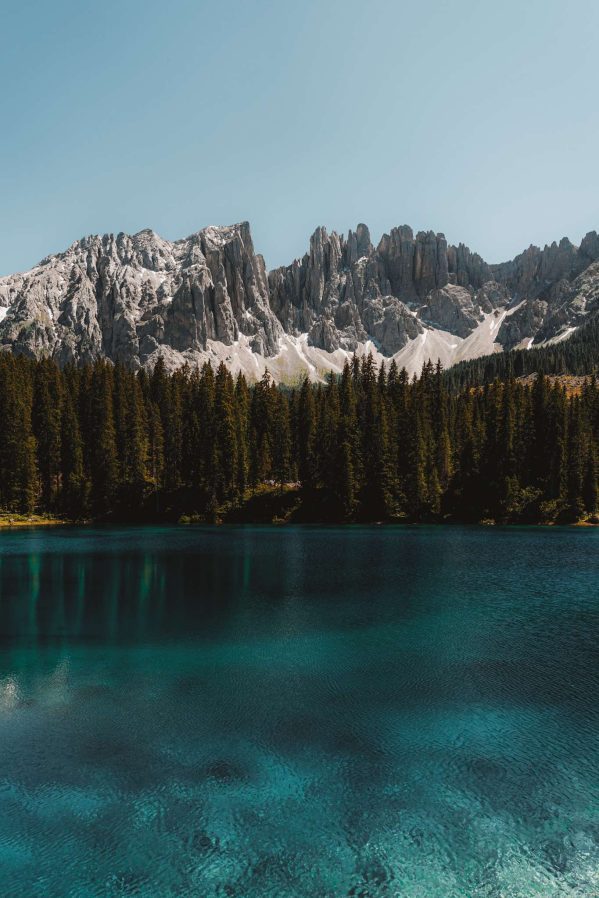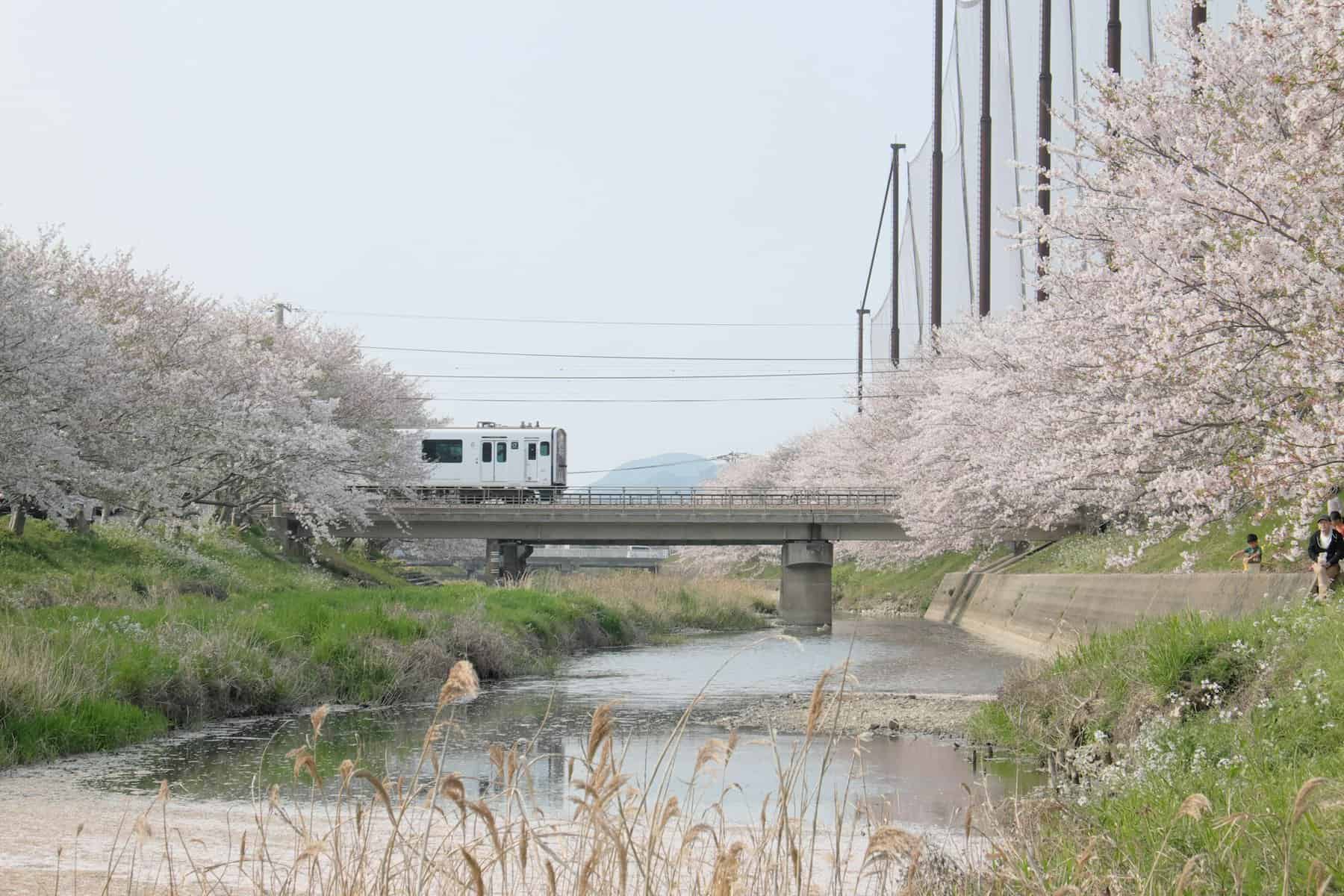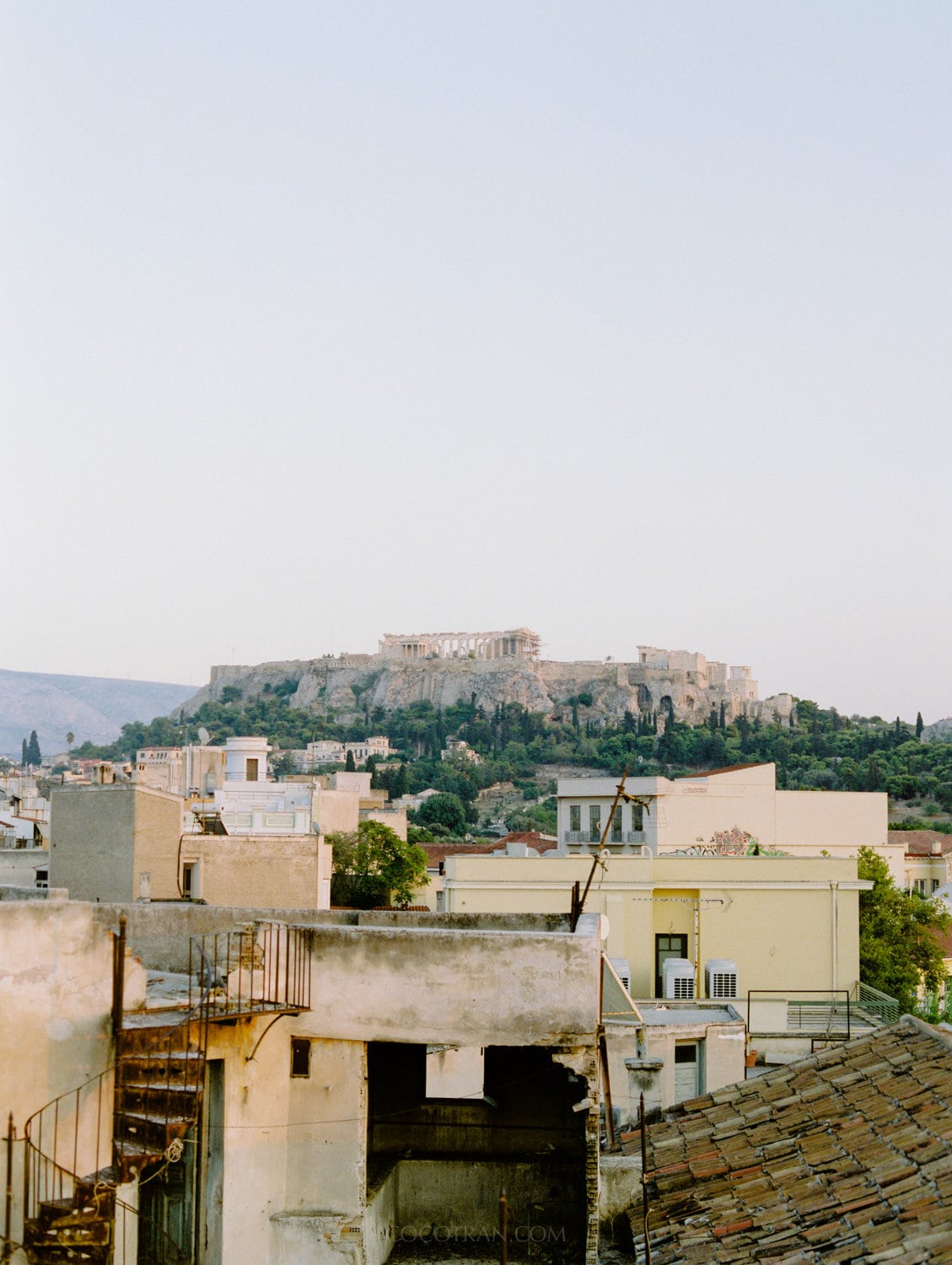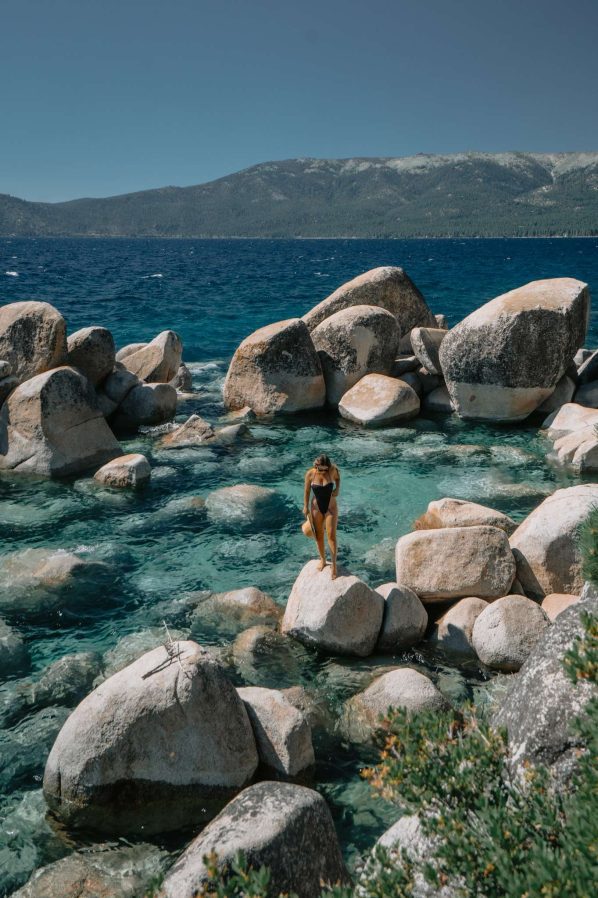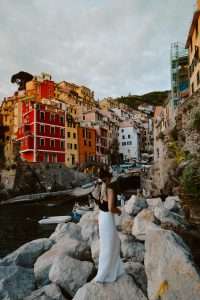Does It Snow in Italy? The Complete Guide to Winter Weather Across the Country
Does it Snow in Italy? Yes– Italy gets plenty of snow each winter, but the amount varies greatly by region due to the country’s diverse geography. The northern mountains get very heavy snow, while central and southern regions rarely see more than a dusting.
Ski resorts in the Alps and Dolomites offer fantastic skiing and snowboarding from December through April.
READY TO BOOK YOUR TRIP?
Best Travel Resources to plan your trip
more helpful travel resources
*This site contains product affiliate links, and I may get a commission, which costs you nothing extra. Thanks for your support
Major cities like Rome, Florence and Venice may get light snow a few days per year, but it doesn’t tend to accumulate much. Read on for more details!

So, does it snow in Italy?
The short answer is yes – parts of Italy get quite a lot of snow every winter. However other areas almost never see snow at all.
Italy’s climate is incredibly diverse, ranging from frosty alpine peaks to warm Mediterranean beaches. So does it actually snow in Italy? The short answer is yes – parts of Italy get quite a lot of snow every winter. However other areas almost never see snow at all.
Italy snow season depends on a few key factors:
Altitude: Higher elevations get more snow. The mountains regularly see several meters of snow per season.
Latitude: Northern Italy has a cooler climate compared to the south, meaning more snow.
Distance from the sea: Coastal areas are milder than inland regions.
So while the Dolomites get hammered with snow all winter, you’ll never see snow on the Sicilian coast.
To break it down in more detail, here’s exactly where and when you can expect to find snow in Italy.
What’s the Climate Like in Italy?
Italy’s climate varies dramatically across the peninsula from north to south. This is due to the Alps blocking cold northern air flows on one side and Mediterranean Sea winds warming the other side.
Northern Italy in Winter
has a continental climate – warm summers and bitterly cold winters.
Central Italy in Winter
is a transition zone with hot summers, cool winters and lots of rain.
Southern Italy in Winter & the islands
border on subtropical with hot, dry summers and mild, wet winters.
So while mountain peaks in the north regularly see several meters of snow yearly, down south snow is almost unheard of even in January.
Where you are in Italy makes all the difference in terms of having to bundle up for icy winds or simply dealing with occasional rain showers. Read on for more specifics on snow by season and region.
What Months Does It Snow in Italy?
Across Italy, December to March are generally the snowiest months, however this focused on the northern half of the country. Along the southern coasts and islands, snow is extremely rare even in midwinter.
Italy’s Snow Season
Stretching across Italy’s top from the Alps to the Adriatic, northern Italy claims legitimate continental winters. While January is the peak, snow starts dusting the peaks as early as October and can linger into May.
Winter Weather in Italy by month Timeline
does it snow in italy in October
Early snows coat the highest glacier peaks, drawing keen skiers and snowboarders for opening day. Lower hills and valleys still enjoy autumnal colors and temperatures hovering around 50°F (10°C).
does it snow in italy in November
More ski resorts open thanks to expanding snow coverage. Storm systems start sweeping snow into Milan, Verona and other cities at higher frequency. The month closes with several inches accumulating in spots by month’s end, adding a wintery air to sightseeing.
does it snow in italy in December
December ushers in winter for northern Italy. Higher elevations see regular snow by mid-December which is great news for ski resorts.
This is early winter in northern Italy, with sub-freezing nights and snowfall averaging every few days in the mountains. Ski season is in full swing while Christmas markets and holiday décor bring seasonal sparkle from Turin to Lake Garda.
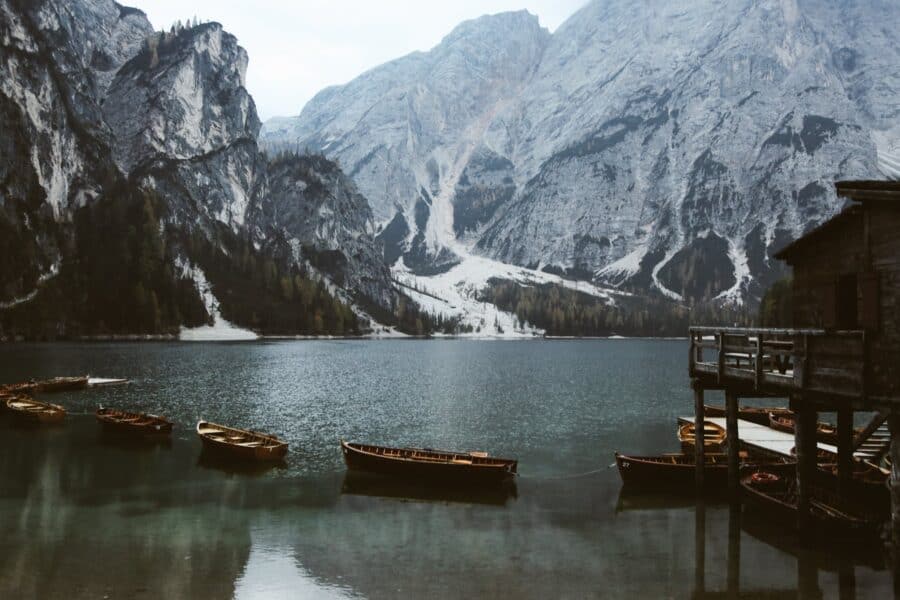
does it snow in italy in January
January is the coldest month across all of Italy and brings the most frequent snowfall to places like Milan, Venice and Florence. The depths build up in the mountains – reaching between 1-2 meters (3-7 feet) across the Alps and Dolomites.
The heart of winter sees ski resort snow depths reach up to 10 feet (3+ meters). Even Florence and Venice tally a few snowy days this month; the canals and Arno River glaze with ice when flakes fly. January nightlife warms up with Italian Alps après-ski.
does it snow in italy in February
February is still quite cold and snowy in northern Italy but the south sees temperatures start to creep up announcing imminent spring.
Snowfall continues hammering the Alps and Dolomites, interspersed with brilliant sunny days. Northern cities have likely seen their season’s quota of flurries while central Italy cleans off winter’s traces, heralding imminent spring.
does it snow in italy in March
By March, snow sports continue in the north however coastal areas are welcoming back sunbathers. April through November see no snowfalls save maybe a few odd flakes atop the highest peaks. The tail-end of snow season finds most resorts still open thanks to considerable base depths. Away from the mountains, winter fades into spring showers and warmer breezes.
does it snow in italy in April/May
High elevation ski areas cling to coverage but valley greens return. Any May snow surprises rather than delights locals ready for sunshine and blossoms.
So while a White Christmas is common for the Italian Alps, southern Sicily basks in spring-like conditions come the later winter months.
What Is the Coldest Month in Italy?
The coldest month of the year across all of Italy is January. However “coldest” varies significantly by location:
- In Milan, January sees average highs around 40°F (4°C) and lows down to 25°F (-4°C). Bitterly cold but not frigid since Milan lies in Lombardy plain away from the higher elevations. Still, sightseeing involves much bundling up!
- Florence enjoys slightly warmer January average temperatures in the mid-40s F (7°C). A jacket, hat and scarf are still necessities when wandering between museum visits.
- Along the Amalfi Coast winters average 50-55°F (10-13°C). Rain gear may come in handy but it’s still pleasant out for hiking the peninsula trails and lightly-dressed beach strolls.
So “cold” in Italy spans quite a wide range. Where it snows versus simply gets chilly depends greatly on your distance from the warming Mediterranean waters.
Where in Italy Does It Snow?
Beyond a general northerly path, precisely which parts of Italy get winter snow depends greatly on proximity to mountain ranges, large lakes and coastal plains.
Does It Snow in Northern Italy?
Northern Italy has a continental climate with cold winters and snow is common, especially in the mountains.
Snow in the Italy in The Alps and Dolomites
The Italian Alps and Dolomites along Italy’s northern borders get absolutely dumped on with snow every winter. Resort towns like Cortina d’Ampezzo regularly record 2-3 meters (6-10 feet) of snow per season.
The ski season runs from early December through April, with January and February being the best months for snow depth. Midwinter temperatures average around freezing but routinely drop well below 0°F (-18°C) at night and with windchill.
Ski areas and italian ski Resorts
With all that snow the region is home to some of the best ski resorts in Europe. Top destinations include mountain ranges and South Tyrol:
- Cervinia: Glacier skiing with slopes open October to May
- Val Gardena: Charming Alpine villages connected by 117 miles of runs
- Alta Badia: Extensive slopes, traditional Ladin culture
- 3 Valleys: World’s largest linked ski area, straddling Italy and Switzerland
- Madonna di Campiglio: Ultra luxury resort with stunning Dolomites scenery
Why go during Snow Italy
For outstanding skiing, winter sports, and snowboarding with reliable snow conditions. Italy snow Resorts offer full winter holiday packages with accommodation, lift tickets, equipment rentals and ski lessons.

Northern Cities and Lakes in Italy Snow Report
While not as snowy as the high Alps, cities and lakes at lower elevations in northern Italy still get regular snow each winter.
Does it snow in Turin
Winter in Turin sees around 10 inches of snow and makes a great base for day trips to ski resorts like Sestriere. Lake Como is ringed by snow-capped mountains and even the city itself may get a couple good dumpings.
Does it Snow in Milan
Verona, Milan and Bologna normally get light snow a few times per winter – a couple inches may accumulate but it often mixes with or turns to rain. Venice rarely sees accumulating snow – though an exception is during bitter cold winter storms when canals and streets may glitter white.
January is usually the snowiest month. Early/mid December and February/March bring chances as well. If planning winter trips, bring warm clothes as even when not snowing, temperatures hover around freezing.
Why Go to Milan during Winter:
Experience a taste of winter with the possibility of snow, without giving up urban sightseeing and cultural attractions. December visits offer festive Christmas markets. January/February bring the best chance for snow.
Does It Snow in Central Italy?
As you move further south into central Italy, the mild Mediterranean climate begins to dominate. Winters are relatively mild with more rain than snow. Light snow flurries may fall but significant accumulation is unusual.
Florence and Pisa see light dustings a couple times a year, especially in January/February, but snow rarely lasts more than a day on the ground. Siena lies at a higher elevation so has slightly better chances.
Snow in Rome italy
In Rome snow is very irregular – some years see no snow at all, others get a couple of flakes falling. Perhaps once a decade enough accumulates for locals to have impromptu neighborhood snowball fights before it melts.
The Apennine Mountains running through central Italy do get winter snow on their highest peaks so if a white Christmas is a must, places like Roccaraso make nice alternatives to the busier north.
Meteorologists do expect climate change to continue decreasing Italy’s already scant snow – so those dreaming of a Roman holiday whiteout should make plans sooner than later!
Does It Snow on the Italian Riviera?
The Mediterranean coastline of northwest Italy is classified as subtropical, with mild, wet winters. Cities like Genoa and resort towns such as Portofino see average winter highs around 55°F (13°C).
So while bundling up is needed, snow is extremely unlikely on the Italian Riviera beaches. The peaks of the nearby Maritime Alps may get light snow but along the actual coast, expect pleasantly mild conditions for exploring seaside villages.
Does It Snow in Southern Italy or the Islands?
Continuing down the Italian peninsula, the climate turns outright warm Mediterranean. Winters have moderate temperatures, lots of sun and rain showers. Snow is essentially unheard of.
Does it snow in Naples Italy?
Naples enjoys average winter highs of 57°F (14°C). You’ll never find snow on the Amalfi Coast or islands like Sicily, Sardinia and Capri – it would damage the lemon trees!
Southern Italy and the islands are wonderful winter destinations for those looking to avoid cold weather. Pack light layers and an umbrella over wool hats and snow boots.
What is the Coldest Month in Italy?
The coldest month everywhere in Italy is January. However “coldest” is relative depending on location:
- Northern Italy: January averages range from freezing 32°F (0°C) in Milan up to bitter 12°F (-11°C) in the high Dolomites. Bundled up sightseeing may be miserable but skiing conditions are fantastic.
- Central Italy: January sees average temperatures of mid 40s Fahrenheit (around 7°C). You’ll need a coat but it’s still pleasant to walk around Rome or Florence.
- Southern Italy: Winters bottom out around 50°F (10°C) in January. Beaches won’t be sunbathing weather but are nice to stroll along.
What to Pack for an Italy Winter Trip
Northern Italy warrants full winter gear: thermal layers, wool socks, snow boots, ski pants, heavy coat, gloves, scarf and hat. Even major cities like Venice and Milan hover around freezing. Having ice grips for your shoes is helpful if paths get slick.
Pack fewer bulky items for central Italy. Choose water-resistant shoes good for rain and light snow. Bring a warm coat, light gloves, hat and scarf plus sweater layers.
In southern Italy, average winter temps stay above 50°F (10°C) so you won’t need serious outerwear. It does still get breezy and wet so do pack long pants, sweater layer, jacket and reliable shoes.
Frequently Asked Questions
Has it ever snowed in Rome?
Yes, Rome occasionally gets a brief snowstorm, especially in the coldest months of January and February. Enough snow may fall to coat cars and buildings white for a day, before it melts or transitions to rain.
Significant accumulation over 3 inches/8 cm is very rare – +- the last few times were in 1956, 1986, 2012 and 2018. Climate change is decreasing Rome’s already slim chances of a picturesque snowscape.
Does it snow in Tuscany?
The Tuscan landscape is stunning with a light dusting of snow but accumulation beyond an inch is uncommon. Higher towns may see a few snowy days per winter – Cortona for example sits at 1,640 ft (500 m).
Lower elevation areas including Siena and Florence get light flurries every couple years – the snow is pretty but melts within a day or so. Historic villages look magical after overnight snow glittering under sunny skies.
Does it snow in Sicily or Sardinia?
No, it does not snow on the Italian islands which have a year-round warm Mediterranean climate. Winters average around 50°F (10°C) – quite cool for sunbathing but the beaches are still nice to explore. Spring comes early to Sicily and Sardinia, with flowers blooming by late February.
What happens if it snows while I’m driving in Italy?
Winter tires are legally required between November 15 and April 15 for driving in areas that get snow and ice like northern Italy. Chains must also be carried in case you get caught in a storm.
If renting a car, be sure to opt for winter or all-season tires. Overall it’s best not to drive during active snowfall – find a safe place to pull over and wait it out until plows clear the roads.
What is the best region in Italy for a white Christmas?
Northern Italy offers the best chance for a white Christmas, thanks to the guaranteed abundant snow in the Alps and Dolomites. Lower elevation areas can be hit or miss on getting snow by December 25th – Venice, Verona and Turin often do but Milan and Lake Como may just get cold rain.
Central Italy sees occasional Christmas snow while southern regions and islands stay snow-free. Wherever you visit, Italy dazzles during the festive season!
So in summary – northern Italy gets quite a lot of snow, central Italy may get light dustings while southern regions and the islands rarely if ever see snow. Ski resorts offer epic winter wonderlands, and even major cities can have magical moments when snowflakes start swirling! Just be sure to pack according to your destination.







